The next day we planned to explore Jodhpur and some of its landmarks. Saurabh Surana had recommended the visit of Umaid Bhawan in the morning. Excellent suggestion! Many strings and specialities of Jodhpur’s history are coming together here, tightly connected with the Rathore Rajput ruler clan. Since 1226 the latter is in ruling power in Marwar Jodhpur. The name of this impressive palace complex comes from Maharaja Umaid Singh (1903-47). In 1918 Maharaja Umaid Singh became successor of his elder brother on the ruler throne of Marwar Jodhpur. At the age of 15 he came to be Maharaja, his great-uncle supported him 1918-23 in this function. At the age of 20 he was installed ruling Maharaja by the British Viceroy Lord Reading. The Maharaja of Marwar Jodhpur was one of the few sovereign rulers of a princely state in colonial India before Independence. Maharaja Umaid Singh reformed and reorganized the structure of the army and the jurisdiction, expanded the school system, set up a providence fund for state employees and granted a state pension for them.
In 1925 at the age of 22 he took the decision to come up against the economic crisis in his country producing great poverty and famine with a vast project in the sense of Keynesian theory. It was in this situation when the Umaid Bhawan project was started. From the then through working for King George V. famous London architecture firm Lanchester & Lodge he took suggestions for the construction of the building, but gave the business of construction to his fellow countrymen solely. The London firm however was tasked with design and production of the interior. The building was realised by the professionals of his country in the traditional way without cement. When 1942 the construction of Umaid Bhawan was completed and the ship loaded with furniture set sail to India it was sunk by German submarines.

Umaid Bhawan Palace Jodhpur,…

…also Chittar Palace because of its position on Chittar Hill, the highest point of Jodhpur.
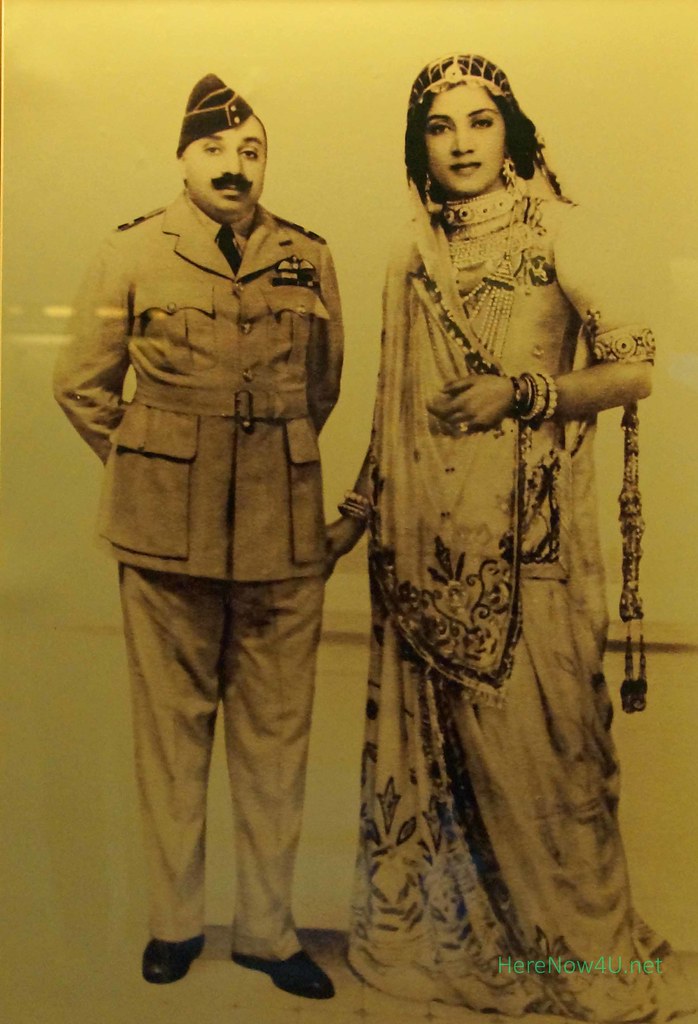
Maharaja Umaid Singh and the Maharani of Marwar Jodhpur
So the furniture completely had to be made anew. This task was given to Stefan Norblin (1892-1952), polish Art Déco artist, portraitist, illustrator, and interior designer and decorator. Stefan Norblin had left his homeland with his family in 1939 to paint the Iraqi royal family. 1941 the family came to India, where Stefan Norblin in Bombay and Patna got order for portraits and wall decorations by the Maharajas. Being entrusted with the work in Umaid Bhawan was an opportunity for Stefan Norblin to accomplish many facets of his artistic challenge in charming pieces of art when he merged Art Déco with traditional Indian art. 1942-46 he created a complex artwork in Umaid Bhawan where at present many pieces or blueprints are exposed in its museum part..
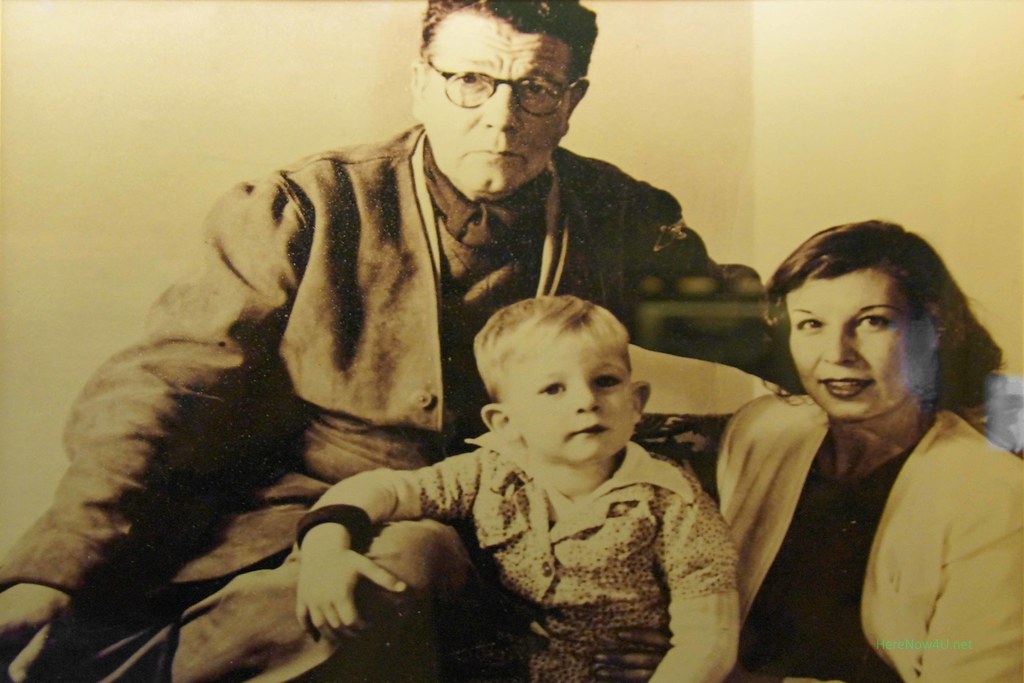
Stefan Norblin with his wife Lena, acclaimed dancer and actress in before-war Poland, and his son Andrew in Jodhpur.
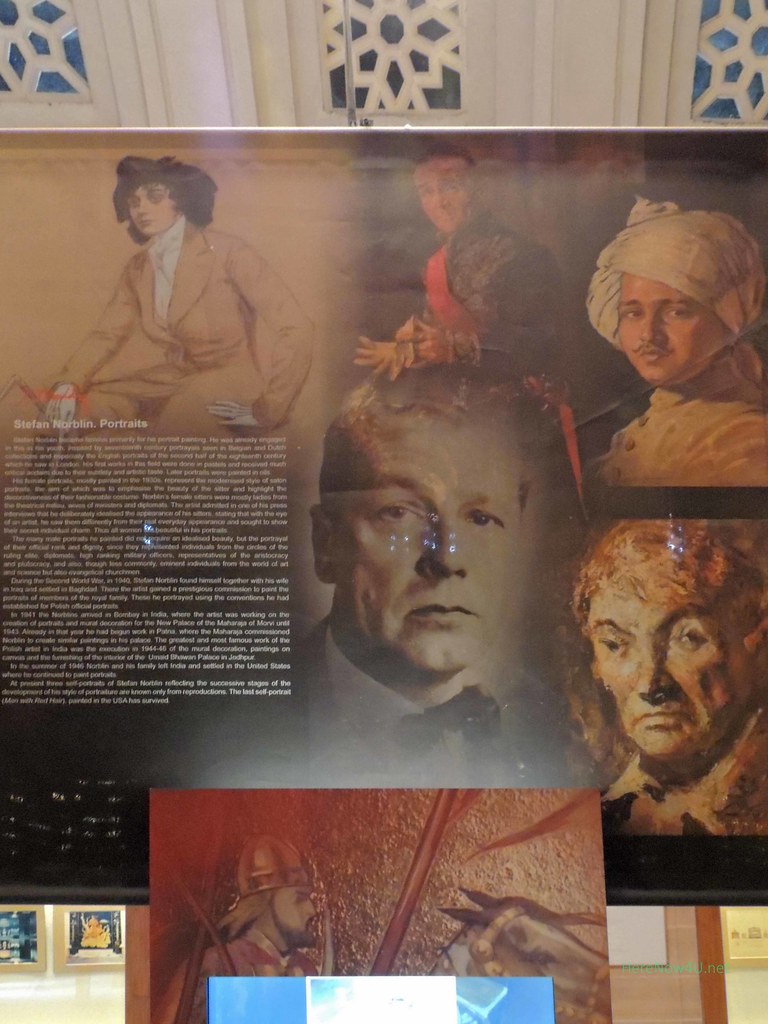
Poster in Umaid Bhawan Jodhpur made for the great Stefan-Norblin-exposition shown in autumn 2011 in Poland and India.
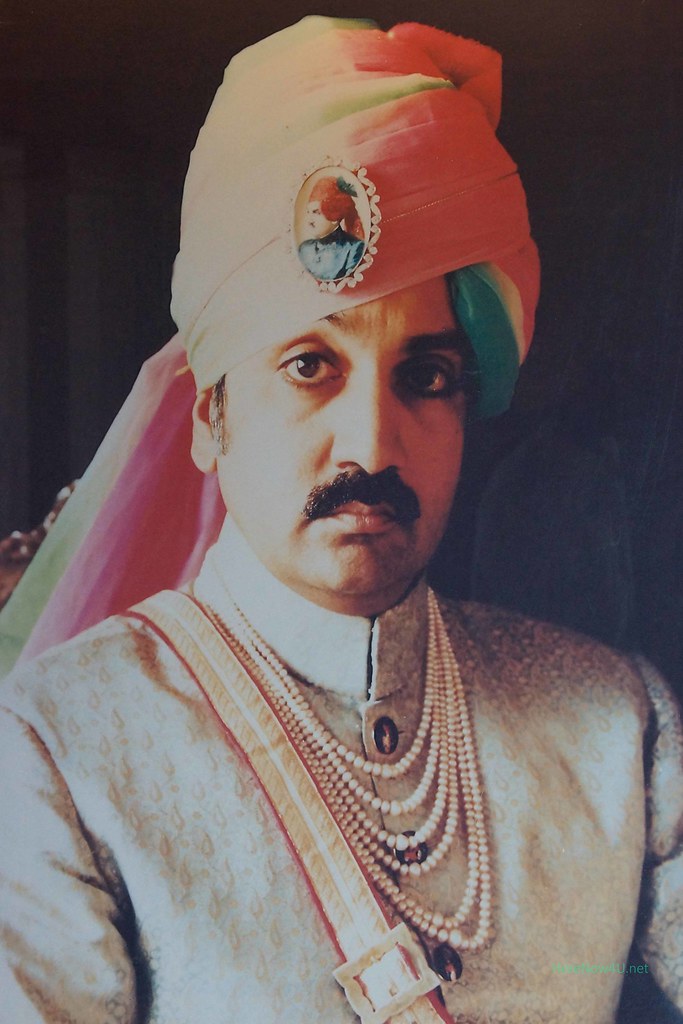
Maharaja Gaj Singh, grandson of Maharaja Umaid Singh
In the 1970ies the huge mansion on the Chittar Hill could no more be maintained properly because of lack of money. Maharaja Gaj Singh, born in 1948, who was at the tender age of 4 the successor to his father Maharaja Hanwant Singh due to the latter’s untimely death, decided in favour of a creative solution of the problem. He split the property into three parts, one museum part, one top luxury hotel part, and one private part where the family until present resides. Umaid Bhawan is worldwide the only mansion of its size in private hands.
The concept of Maharaja Gaj Singh not only brought about recapitalisation, but also provides the opportunity of an internationally unique permanent exhibition of artist Stefan Norblin for the visitors of the museum. In cooperation with the Polish embassy in India Maharaja Gaj Singh initiated some years ago the presentation of Stefan Norblin’s oeuvre in Umaid Bhawan. This recalled the in his homeland forgotten artist to his compatriots as one of their great, as many of his creations are lost. His son Andrew still lives in San Francisco where Stefan Norblin settled with his family after the completion of his work in Umaid Bhawan. Maharaja Gaj Singh literally showed as a king when he invited the artist’s son to the opening of his late father’s permanent exhibition in the hall of the museum part of Umaid Bhawan. Andrew Norblin, a renowned Jazz musician in the US so was able to return to the location of some of his most beautiful childhood memories.
Maharaja Gaj Singh as well as all still „royal family“ called members of the Rathore clan are highly estimated in Jodhpur. His commitment for education and formation of girls is mentioned here representatively for the broad range of his social activities. Through his contacts with the worldwide Polo community he again and again by charity performances succeeded in collecting the funds needed for the realisation of a broad range of social projects in Marwar Jodhpur. All members of the Rathore clan incidentally can be characterised by their manifold voluntary social services.
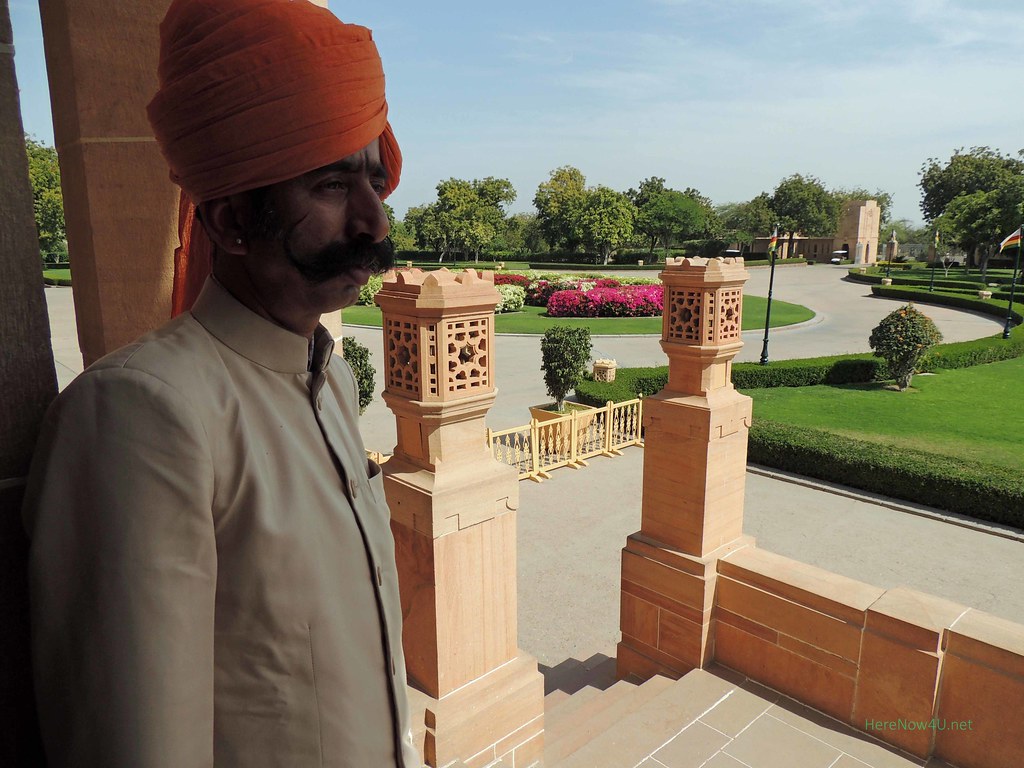
Vue from museum entry to hotel entry
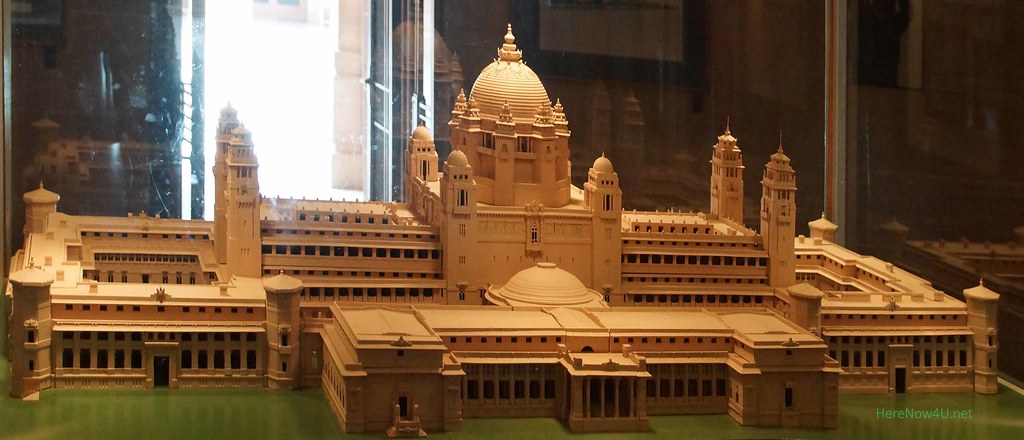
Wooden model of 1928-43 with 347 rooms constructed Umaid Bhawan
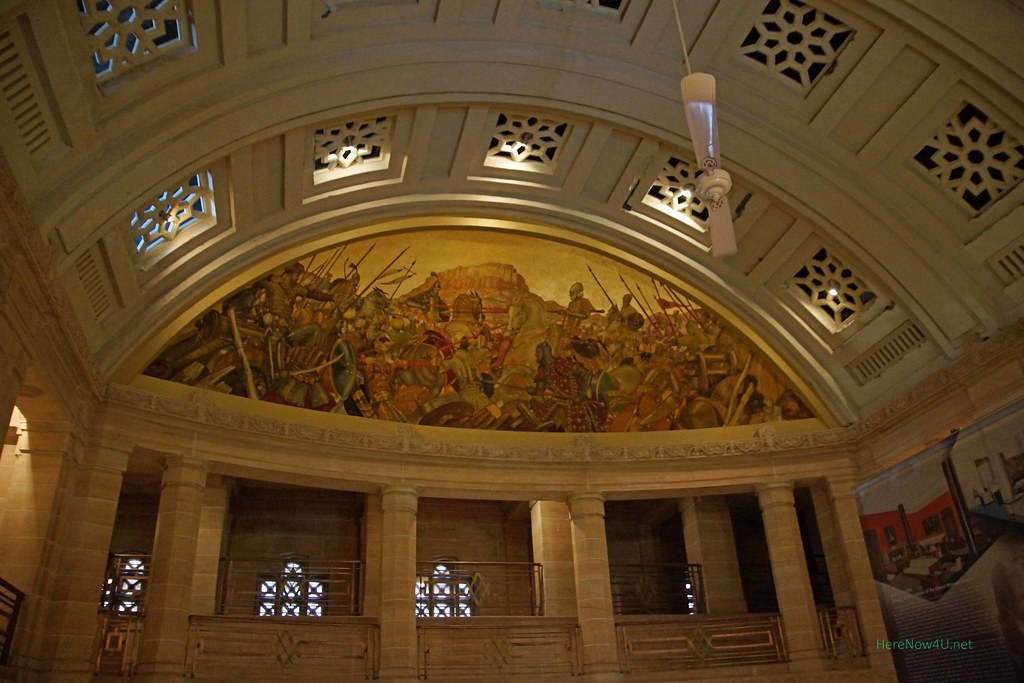
Main hall of museum area
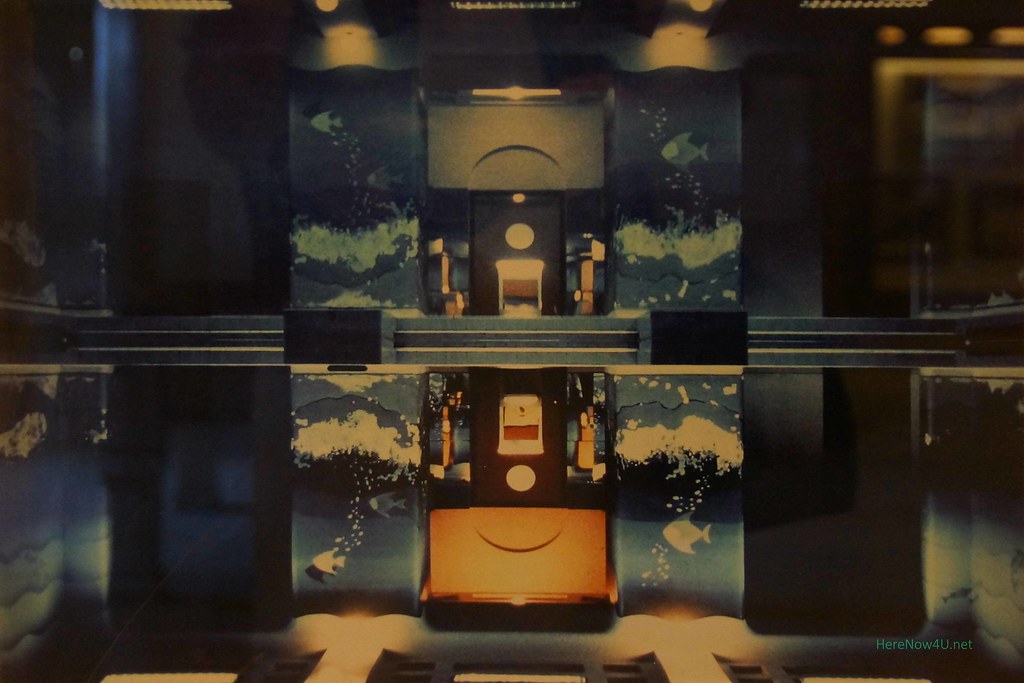
Indoor swimming pool

Bathroom
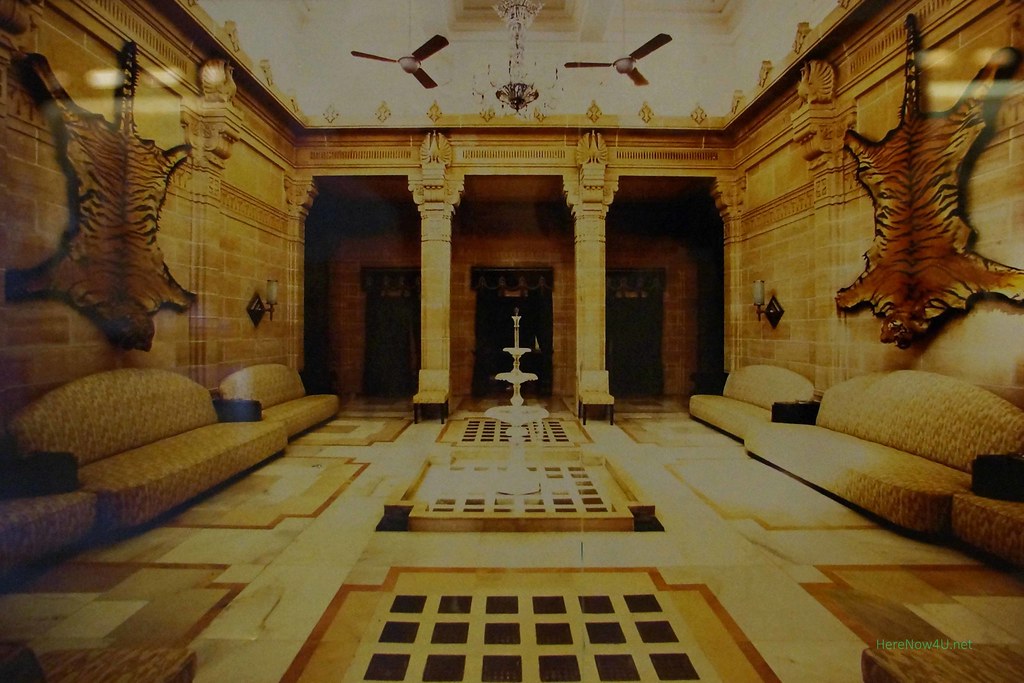
Saloon
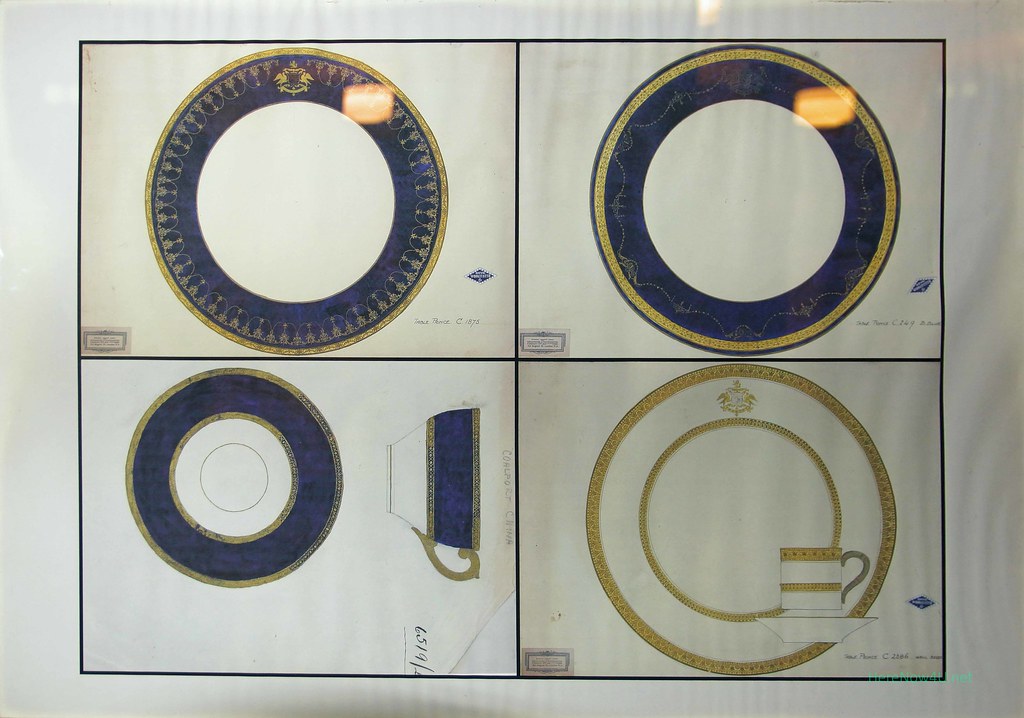
Porcelain crockery
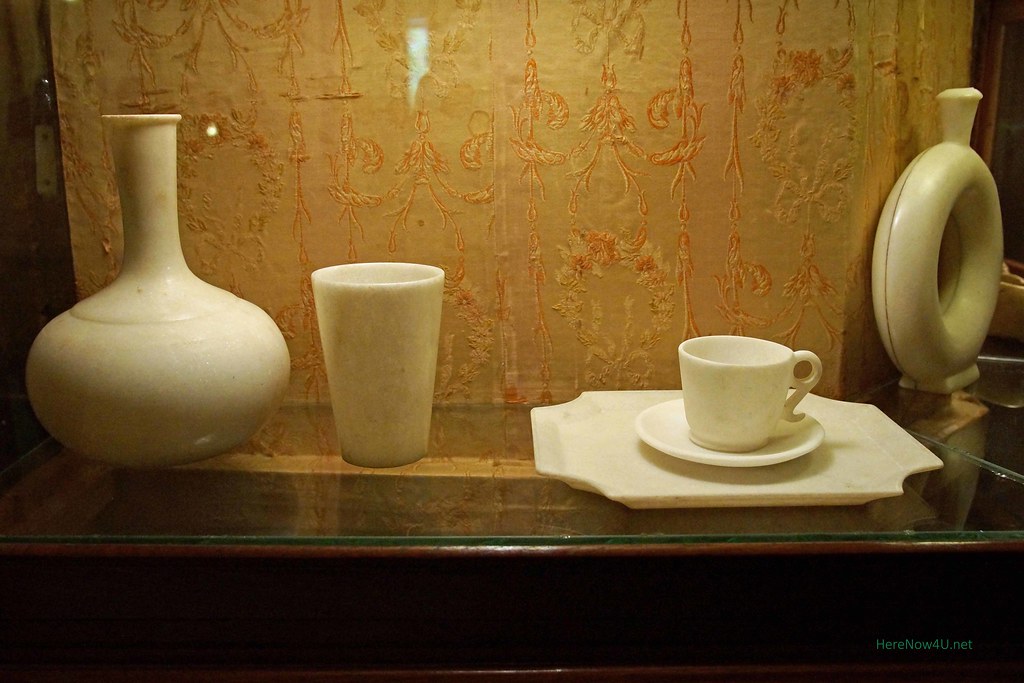
Marble crockery
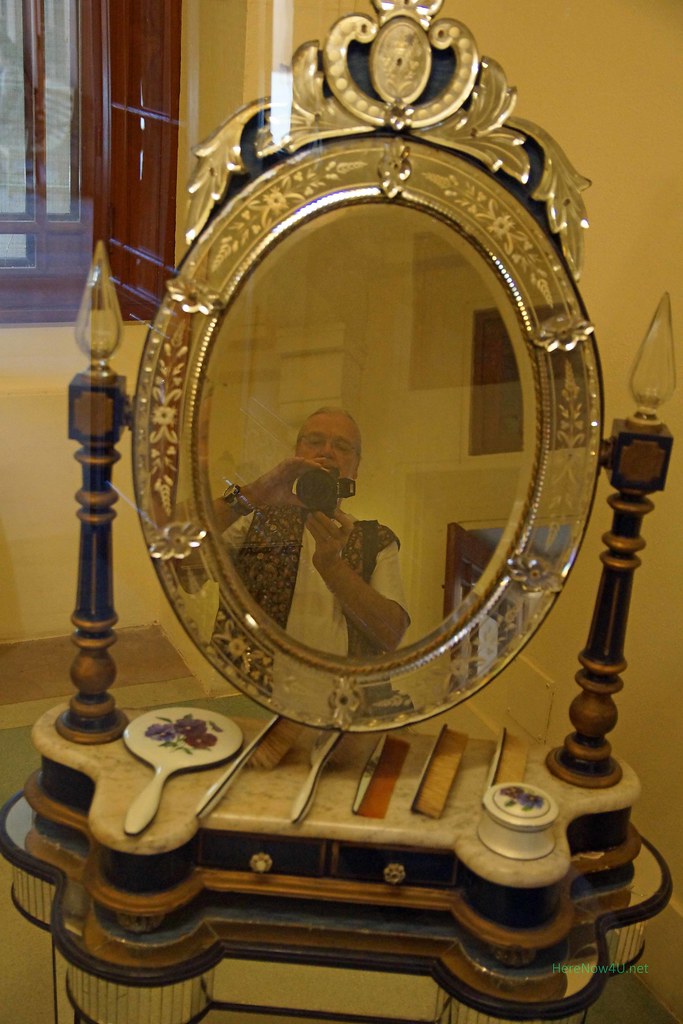
Dresser
In a nearby room watches, instruments for navigation, and toys from the belongings of the Rathore clan are exposed.
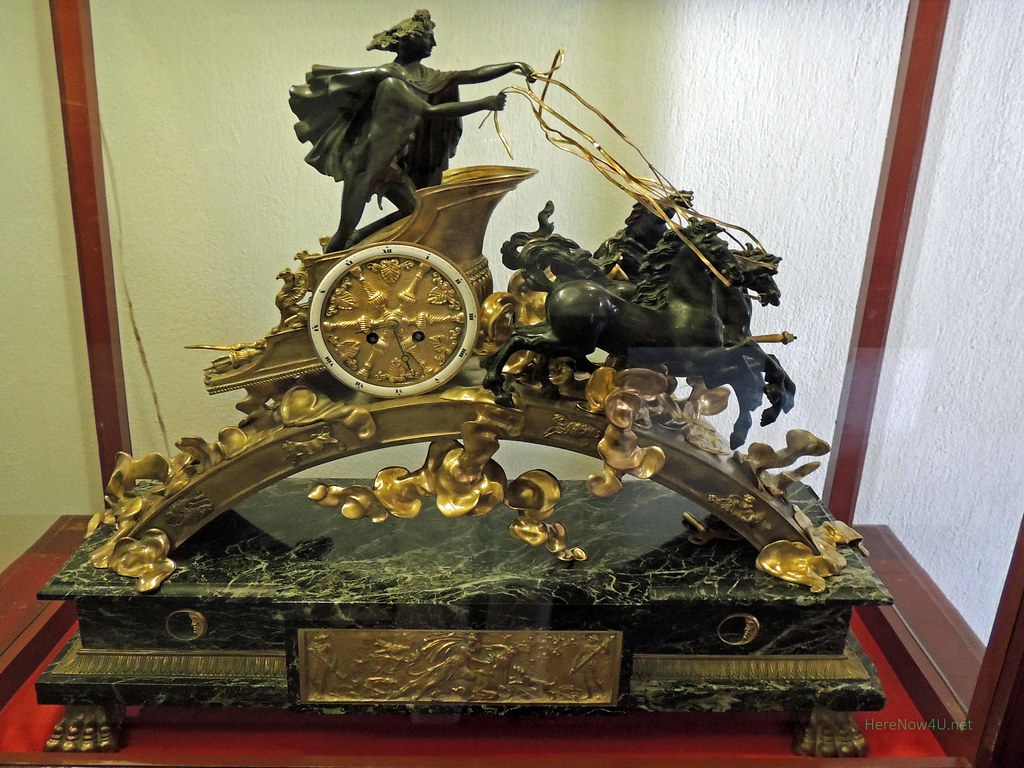
Precious objects…
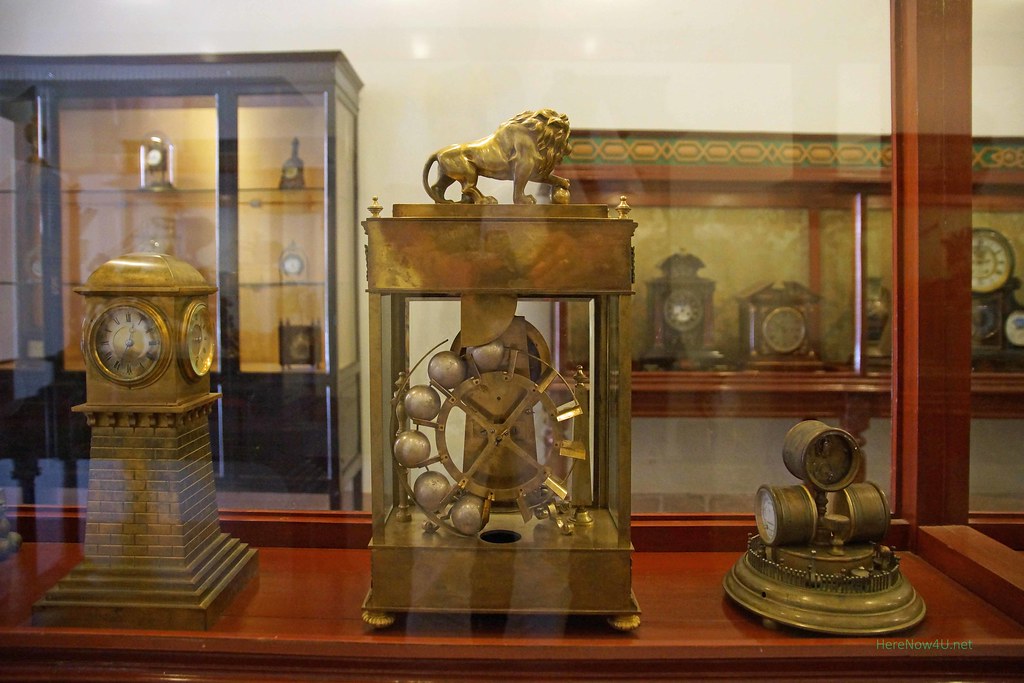
…from the collection of watches...
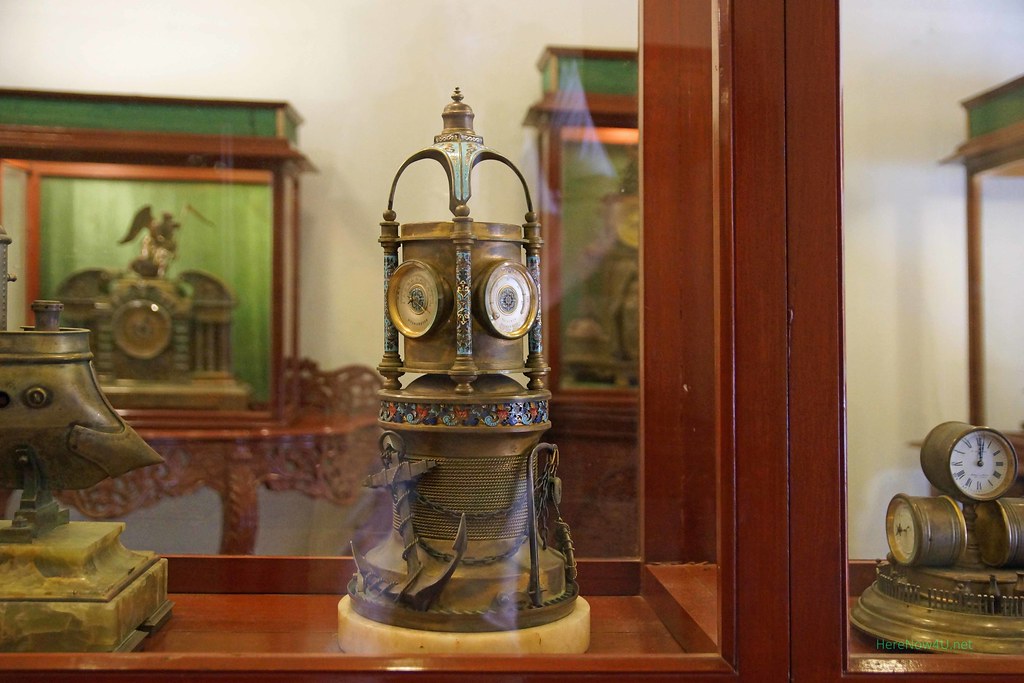
…and instruments for navigation.
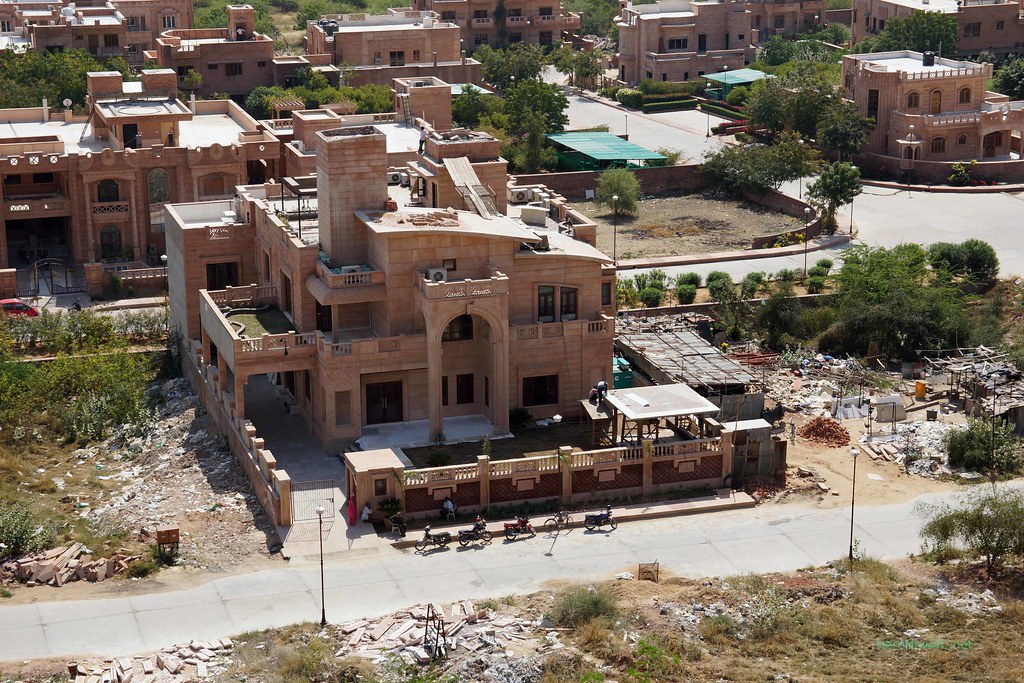
Leaving the museum a new construction project on Chittar Hill can be seen:

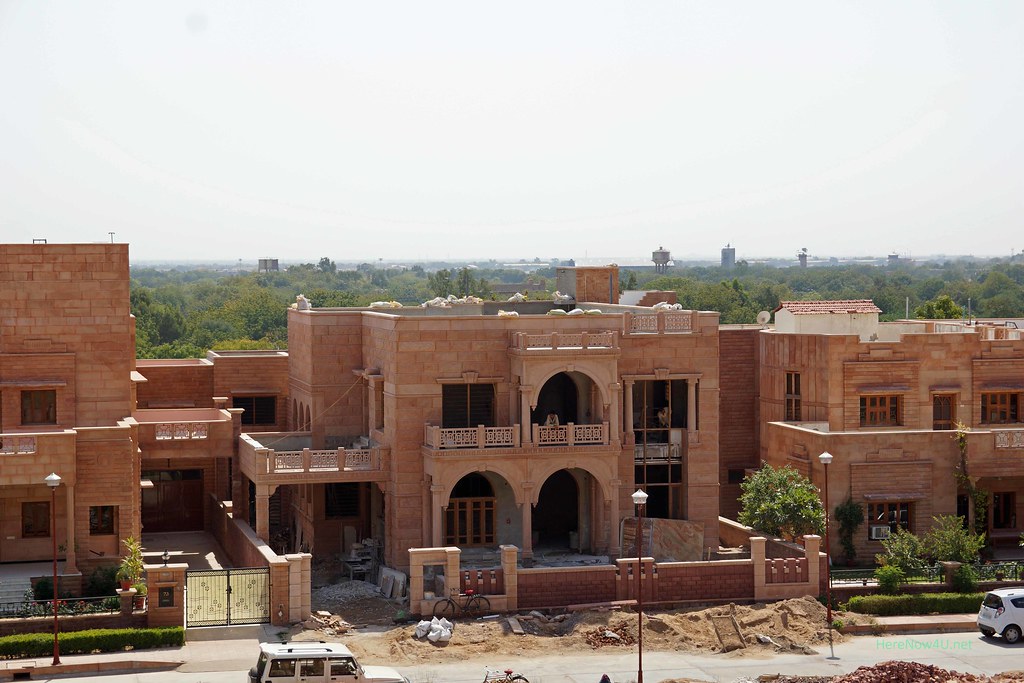
All houses of this area are built in traditional local style.
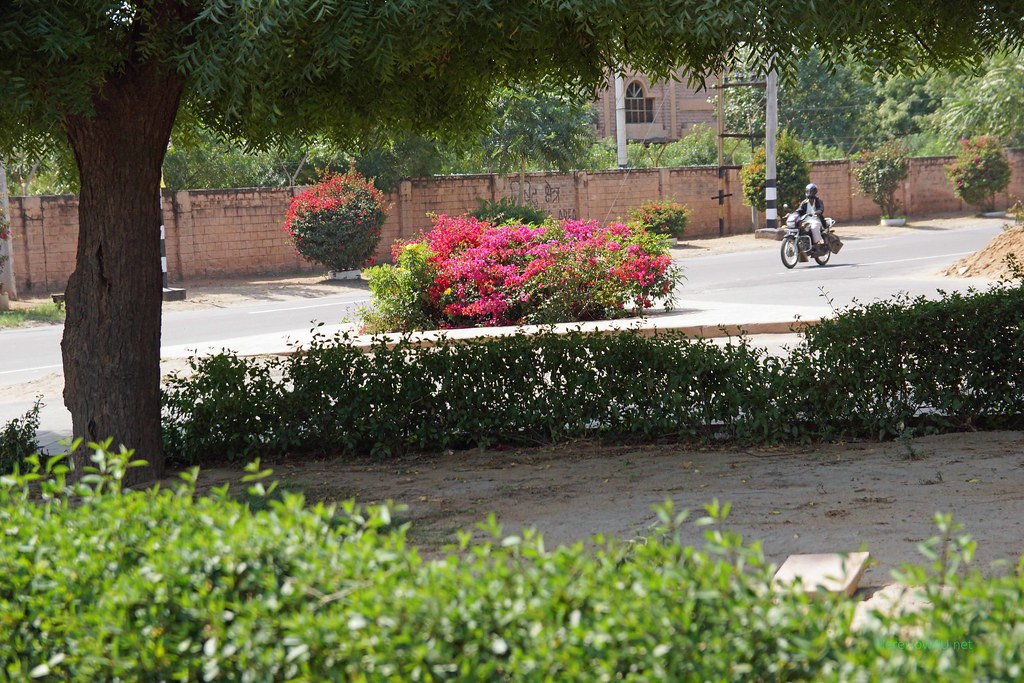
On the way back to town the well maintained streets were an eye-catcher.

In the shadow of a tree we discovered a discarded, but freshly painted tank.
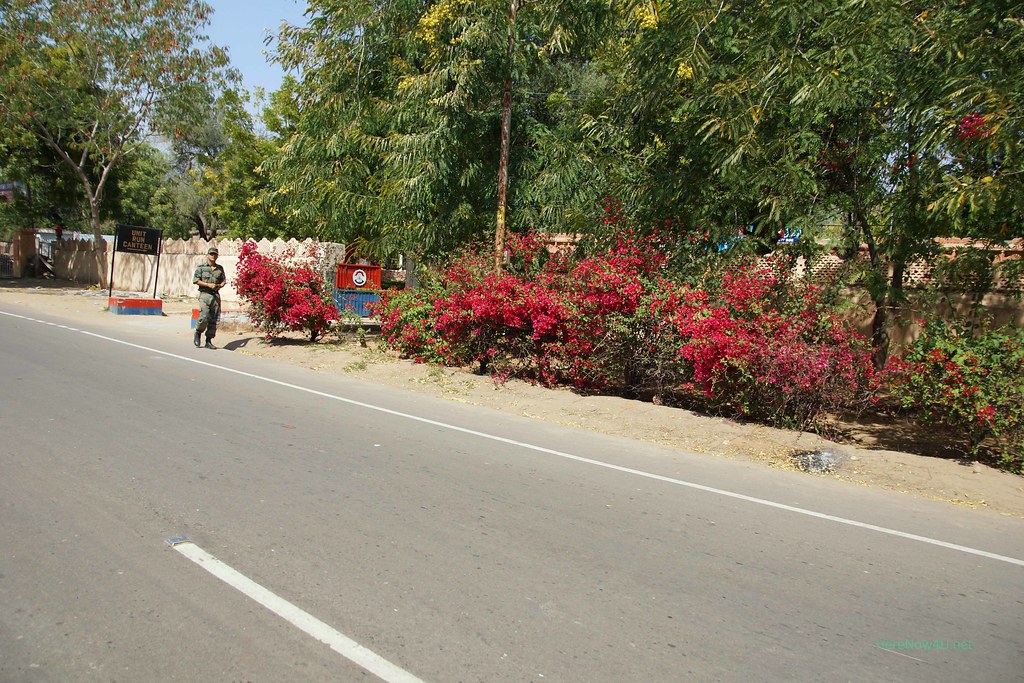
Lodgings, common kitchens, kindergartens, and schools can be found in the town-in-town like district for members of the army, vermillion Bougainvilleas at the roadside.
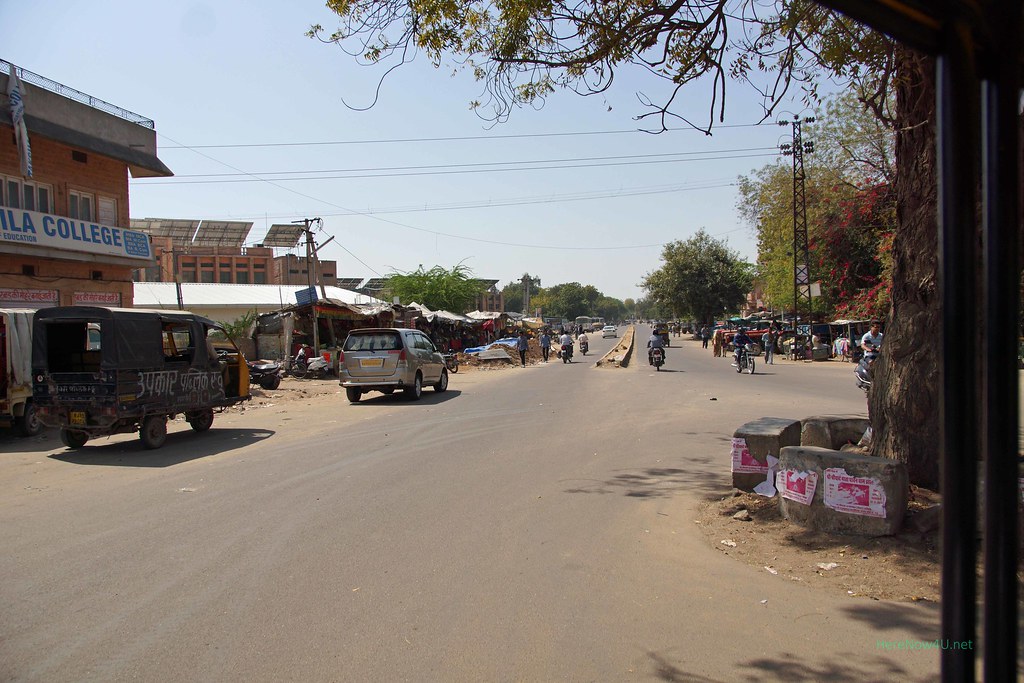
After the round-about the traffic is directed towards the centre of the city, and the streets are looking like this.
 Editor Carla Geerdes
Editor Carla Geerdes